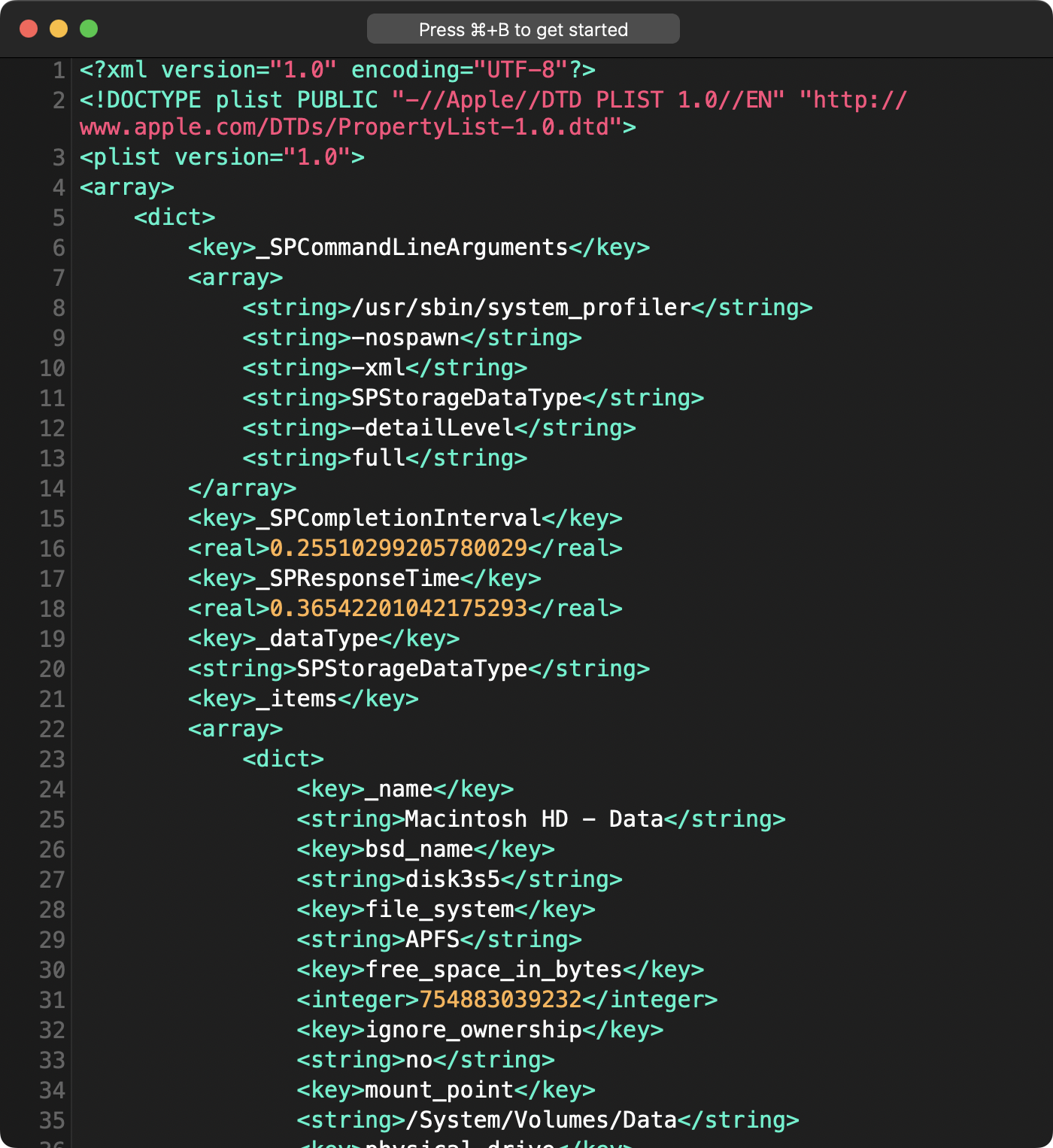xpath snippets
Some command snippets from my learnings using the --xpath option in xmllint on macOS.
What is xpath?
NOTE: As of this writing xmllint uses xpath version 3.1. (http://xmlsoft.org/)
XML Path (xpath) is a command line binary that allows the user to traverse the nodes (paths) in an XML tree or JSON tree.
The primary purpose of XPath is to address the nodes of XML trees and JSON trees. XPath gets its name from its use of a path notation for navigating through the hierarchical structure of an XML document. XPath uses a compact, non-XML syntax to facilitate use of XPath within URIs and XML attribute values. XPath 3.1 adds a similar syntax for navigating JSON trees.
from: https://www.w3.org/TR/2017/REC-xpath-31-20170321/
Where to find xpath on macOS
Binary Path
xmllint is in /usr/bin/xmllint
xmllint –xpath Help Page
If you open Terminal.app and type /usr/bin/xmllint --xpath then press Return you will get the following help output. (compressed to only show the xpath related output)
/usr/bin/xmllint --xpath
Usage : xmllint [options] XMLfiles ...
Parse the XML files and output the result of the parsing
--version : display the version of the XML library used
...
...
...
--xpath expr: evaluate the XPath expression, imply --noout
Libxml project home page: http://xmlsoft.org/
Not super helpful, IMO, if you want to know how to apply the commands 😜.
Using –xpath
Create a test file
The following examples use a plist file (fancy xml) containing information about the storage devices on a macOS system.
You can create the same file with the following command
/usr/sbin/system_profiler -xml SPStorageDataType > ~/Desktop/storage_data_type.plist
Contents of the file should look similar to the below.

Examples
Below is an example showing the basic command structure
/usr/bin/xmllint --xpath "xpath expression" xml_data.xml
Reading data from XML output
Return all contents of the xml file
The following command will print the entire contents within the first <array> tag.
xmllint --xpath "//array" storage_data_type.plist
Return all keys in the plist
The following command will print the content stored in all top-level keys in the first <array>.
xmllint --xpath "//array/dict/key/text()" storage_data_type.plist
_SPCommandLineArguments
_SPCompletionInterval
_SPResponseTime
_dataType
_items
_name
bsd_name
file_system
free_space_in_bytes
...
Return all second level array
The following command will print all contents within any second level <array> tags.
xmllint --xpath "//array/dict/array" storage_data_type.plist
Return the first sting from each dict in the second array
The following command will print the text (text()) values contained in the first string (string[1]) in each dictionary. This gives us the names of the mounted drives.
xmllint --xpath "//array/dict/array/dict/string[1]/text()" storage_data_type.plist
Macintosh HD - Data
Macintosh HD
StatusBuddy_v2.0-89
SFSymbols
See the bsd_name of the disk
xmllint --xpath "//array/dict/array/dict/string[2]/text()" storage_data_type.plist
disk3s5
disk3s1s1
disk5s1
disk4s2
See the free_space_in_bytes for each disk
xmllint --xpath "//array/dict/array/dict/integer[1]/text()" storage_data_type.plist
754883039232
754883039232
36237312
168611840
Conclusion
After working with xmllint --xpath for a bit, I’ve found that it works well for adequately structured xml but not so much for plist files. So output like an HTML response from a curl command or, heaven forbid, an API responds in xml, xmllint --xpath is a perfect tool for the job. But, for plist files, while you can see and get to information within the plist, you have to make some assumptions about the structure, and if that structure happens to be off, you might not get the correct output that you’re expecting.
However, to work with plist files formatted in xml, using something like PlistBuddy is the way to go because it’s designed to traverse the structure of plist files.